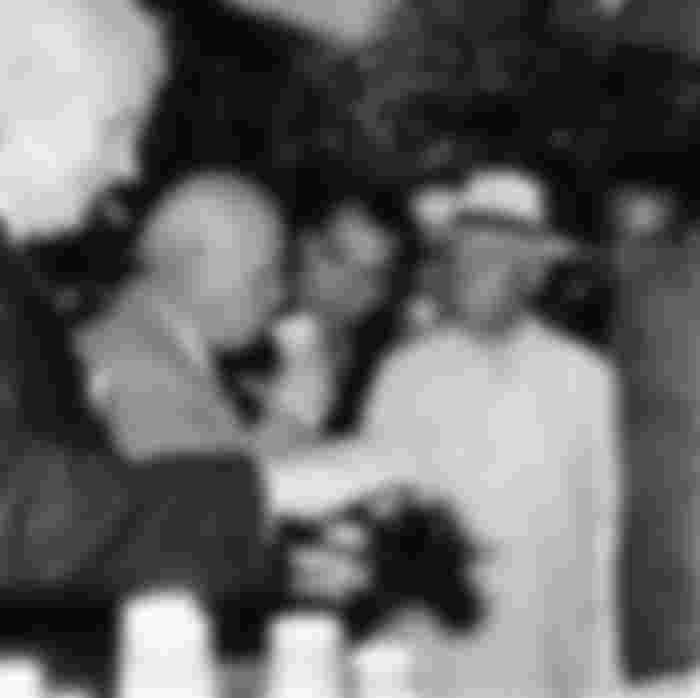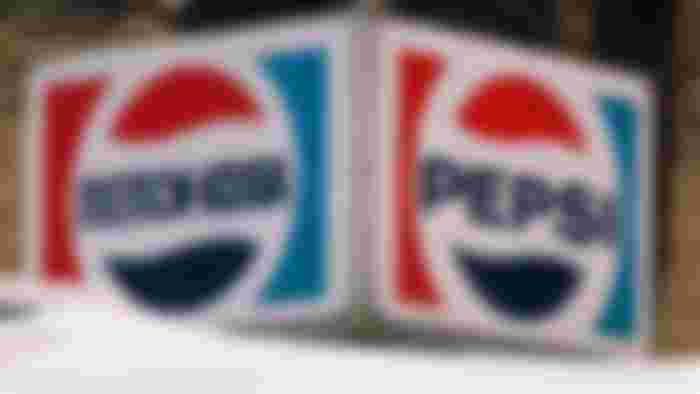The Cold War, the iron curtain, and two super powers at the brink of war for decades. Two competing ideologies that are polar opposites of each other, with the USSR even outlawing any private enterprise. It's hard to imagine that any American company could have dealings with a government that widely viewed them as their enemy.
So how was an American soda company able to sell its product in a communist country?
This story starts all the way back in 1959, when a delegation from the United States travels to Moscow to host a national exhibition as part of a cultural exchange between the two countries. This is where pepsi's long and strange realtionship with the USSR begins.
As part of the exchange Richard Nixon who is then vice president, travels with the delegation to promote American products and culture. Pepsi was one of the companies that had signed up to host a booth at the exhibition, but they actually weren't supposed to be there. Donald Kendall who was the head of Pepsi's international division, had gone against the wishes of the company's leaders by sponsoring a booth, and he was desperate for some results to take back home with him.
Kendall was secretly hoping to expand the brand to the Soviet Union, and he came up with a plan. The night before the opening of the exhibition, Kendall goes to the American embassy in Moscow to talk to Nixon. At the meeting he tells Nixon he“had to get a Pepsi in Khrushchev’s hand.” to prove that the trip was worthwile.
Nixon who was a firend of Kendall agrees! The next day the exhibition opens and Nixon gives Nikita Khrushchev, the leader of the Soviet union a tour. They go from booth to booth until they reach the Pepsi stand. At the booth Kendall is waiting, ready with a couple of cups of Pepsi, and hands them out to both Nixon and Khrushchev. As Khrushchev sips his drink, a photographer takes a photo of them.

For Kendall the photo was a big victory, and back home they thought so too. Kendall gets promoted and rises through the ranks to become the CEO of Pepsi, just six years after the event!
This gives Kendall the opportunity he has been waiting for, a chance to open negotiations with the USSR! By 1972 he succeeds and is granted a cola monopoly for the entire country until 1985! As part of the deal, cola syrup is exported to the country where it is then bottled locally.

But there was still one problem that had to be figured out, how would Pepsi be paid?
The Russian Ruble at the time wasn't accepted by other countries, because the government set the value of the currency. On top of that it was illegal under Soviet law to take the currency outside of the country, and the USSR had limited access to foreign currencies, so Pepsi and the Soviets had to figure out another solution. They eventually agreed to swap Pepsi for Stolichnaya vodka.
The deal had finally been concluded and Pepsi began to be exported to the union. The trade turned out to be a huge success, and by the 1980's the Soviets were drinking almost 1 billion bottles per year! On the American side things were going well too, Stolichnaya had become very popular with American consumers. In 1988 Pepsi even aired its first commerical in the country, which had Michael Jackson star as the lead!

But in the meantime the USSR had invaded Afghanistan.
This was one of the many hot spots in the Cold War and involved the United States by proxy, who were supporting the rebel forces in the country. American consumers had now begun boycotting all Soviet products, and Pepsi now wanted something else in return for their syrup.
So in 1989 Pepsi and the USSR returned to the negotiating table to renegotiate their deal, and this is where things take a stranger turn.
Pepsi eventually signs a deal in return for 17 old submarines, a frigate, a cruiser, and a destroyer! This effectively turned pepsi into the 6th largest naval power at the time!

Now you're probably wondering, why would Pepsi agree to a deal like that?
Well the company sold them for scrap and made a nice profit on them. Kendall even joked to the to the national security advisor to the US government at the time: “We’re disarming the Soviet Union faster than you are”.
Not long after this deal in, it was time again to negotiate the next one in 1990, which was estimated to be worth around 3 billion dollars! This number was based on an estimate of how much vodka sales would earn Pepsi over the next decade. Once again Pepsi would trade cola for ships, but this time they were cargo ships. Things were going so well that Pepsi even opened Pizza Hut locations in the country!
But trouble was brewing inside the Soviet Union, the country was starting to disintegrate. The Soviet economy was falling apart from years of mismanagement and neglect. Mikhail Gorbachev had tried to save the country with the new reforms of Glasnost and Perestroika, but this only divided the country even more. Satellite states from the Warsawpact were breaking away, reducing their influence even more, and in 1991 the Soviet Union fell apart.
This was a huge problem for Pepsi! Their businesses in the USSR were now spread across 15 different countries. The mozzarella for the pizza's came from Lithuania. The company that was supposed to make plastic bottles for Pepsi, was now based in Belarus. And the ships that Pepsi was supposed to receive now came from Ukraine. What made things worse, is that the new countries all wanted a cut from the sales.
Luckily for Pepsi it was able to renegotiate parts of the deal, and piece by piece they put everything back together. Pepsi continued to operate in the former Soviet Union, but now they had a new competitor, Coca Cola.
Over time the influence of Pepsi faded in Russia, and it became just another brand. After only a few years Coca Cola beat Pepsi, to become Russia's most popular Cola brand. But the legacy of these deals can still be seen today. Russia is still Pepsi's second largest market outside of the United States!
Thanks for reading and I hope you enjoyed this crazy story!



